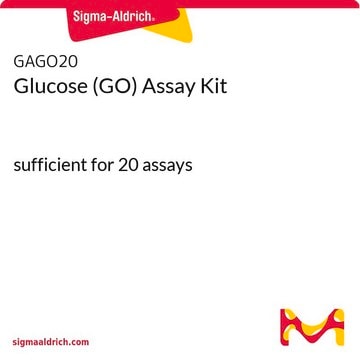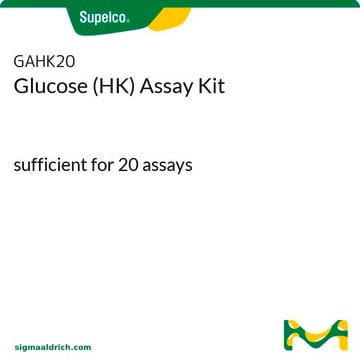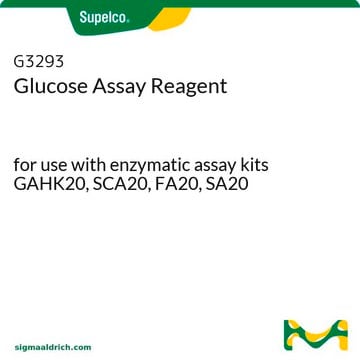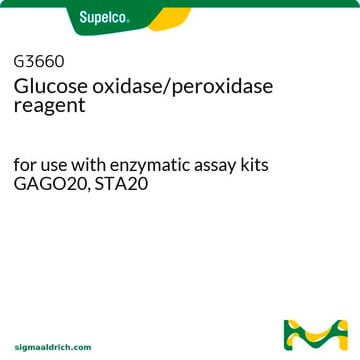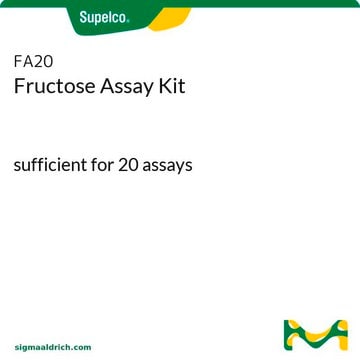CBA086
Glucose Assay Kit
About This Item
Produits recommandés
Utilisation
sufficient for 100 tests
Niveau de qualité
Conditionnement
pkg of 1 96-well plate(s)
Fabricant/nom de marque
Calbiochem®
Conditions de stockage
OK to freeze
Méthode de détection
colorimetric
fluorometric
Conditions d'expédition
wet ice
Température de stockage
−20°C
Description générale
Composants
Avertissement
Principe
Notes préparatoires
• Glucose Probe: Supplied ready to use. Warm to room temperature to thaw the DMSO.
• Standard Curve: For colorimetric assay, dilute the Glucose Standard to 1 nmol/ml by adding 10 µl of the Glucose Standard to 990 µl of Glucose Assay Buffer, mix well. Add 0, 2, 4, 6, 8, 10 µl into each well individually. Adjust volume to 50 µl/well with Glucose Assay Buffer to generate 0, 2, 4, 6, 8, 10 nmol/well of Glucose Standard. For fluorometric assay, dilute the Glucose Standard solution to 0.1 nmol/µl by adding 10 µl of the Glucose Standard to 990 µl of Glucose Assay Buffer, mix well. Then take 20 µl into 180 µl of Glucose Assay Buffer. Mix well. Add 0, 2, 4, 6, 8, 10 µl into each well individually. Adjust volume to 50 µl/well with Glucose Assay Buffer to generate 0, 0.2, 0.4, 0.6, 0.8, 1.0 nmol/well of the Glucose Standard.
Stockage et stabilité
Autres remarques
Informations légales
Clause de non-responsabilité
Code de la classe de stockage
10-13 - German Storage Class 10 to 13
Certificats d'analyse (COA)
Recherchez un Certificats d'analyse (COA) en saisissant le numéro de lot du produit. Les numéros de lot figurent sur l'étiquette du produit après les mots "Lot" ou "Batch".
Déjà en possession de ce produit ?
Retrouvez la documentation relative aux produits que vous avez récemment achetés dans la Bibliothèque de documents.
Filtres actifs
Notre équipe de scientifiques dispose d'une expérience dans tous les secteurs de la recherche, notamment en sciences de la vie, science des matériaux, synthèse chimique, chromatographie, analyse et dans de nombreux autres domaines..
Contacter notre Service technique